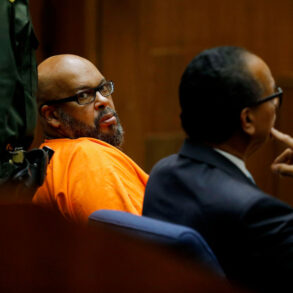
CHICAGO — As Chicago urban historian Shermann “Dilla” Thomas would put it, “Everything dope comes from Chicago,” and one of the items atop that list is the Chicago White Sox baseball cap — the center point of a documentary presentation and panel discussion held by the baseball organization Monday night.
Put on at the Bronzeville Winery, the documentary — previously released in September — was played for the crowd assembled. A panel discussion followed — featuring influential hip-hop and media figures from Chicago — who further broke down the intersection of hip-hop culture and the White Sox.
“The [White] Sox brand as a whole is something that we don’t have to do too much,” said Bree Specific, one of the panelists and a radio personality with WGCI. “It’s just like a legendary relationship. The more Chicago grows and expands, the Sox stay the same.”
When it comes to the design of the team’s logo, Bree Specific described it as simplistic, yet impressive and bold to the point it permeated hip-hop culture around the world, finding itself atop the heads of rappers like Ice Cube and N.W.A., while also having the staying power to find itself being rocked by the likes of the next generation of rappers — whether it be Chicago locals like Chance the Rapper and Vic Mensa, or Kendrick Lamar out on the West Coast.
“I think a legendary logo goes a long way,” said Mensa, another member of the panel Monday. “That’s a very strong foundation because associations leapfrog. You have one person who associates it with Ice Cube, but Ice Cube is also a huge influence on Kendrick Lamar, and Dr. Dre helped create Kendrick Lamar too, in a sense. At that point, it kind of becomes a foundational piece in the aesthetic language of the culture.”
When Mensa sees the hat or the logo, he said there’s an association attached to the many statements that have come with wearers of the hat since the club’s rebranding in 1990, but when it comes to him, its display is beyond a fashion statement. It’s a manifesto of grit — something that is emblematic of everything that makes the South Side, the South Side.
“It’s always going to feel like the South Side to me,” Mensa said. “I just think it’s harder — the black and the white, you know.”
Of course, after the 1990 rebrand, the South Side went nationwide in 1991 after Ice Cube donned the new Sox cap in his Steady Mobbin’ music video.
“I didn’t want to return straight with the Raiders look,” Ice Cube said in the documentary. “We were looking for something cool to set us apart. We still liked the black, but when the Sox changed their colors … It strangely spoke to us … This is edgy. This is a new flavor.”
According to the documentary, in 1990, NewEra made 9,000 White Sox hats. The next year in 1991, the hat production company produced more than 60 times that amount — more than 544,000.
The hat’s popularity took off from there. In 1992, Dr. Dre released an all-time classic hip-hop album — The Chronic — and in the music video for the lead single, Nothin’ But A G Thang, Dr. Dre also donned the Sox cap.
Despite the burgeoning popularity of the White Sox hat at the time, Ice Cube stopped short of saying he put the Sox cap on the worldwide map in the documentary, and instead differed to the ‘Big Hurt’ and his early South Side success as a bigger contributing factor to the hat’s rise as an iconic fashion item.
“I really appreciate that. But like I said, we were winning,” Frank Thomas said in the documentary, thumping his fist into the palm of his hand. “The culture was winning. We were the new upcoming team and we continued to win a lot.”
The swagger-infused rise of the 90’s White Sox behind the likes of Thomas, Bo Jackson, Tim Raines and Robin Ventura, combined with the rebel mentality of hip-hop’s top artists, cemented the hat’s popularity both in baseball and hip-hop culture to modern day.
Once Ice Cube, Dr. Dre and Eazy E started wearing the Sox cap, everyone wanted to be like their favorite rapper, and once Thomas and Jackson stole the show on the South Side, the two cultures blended together to create a universal, monochromatic logo iconic of both — the Sox cap.
Suggest a Correction
This post was originally published on this site be sure to check out more of their content.







